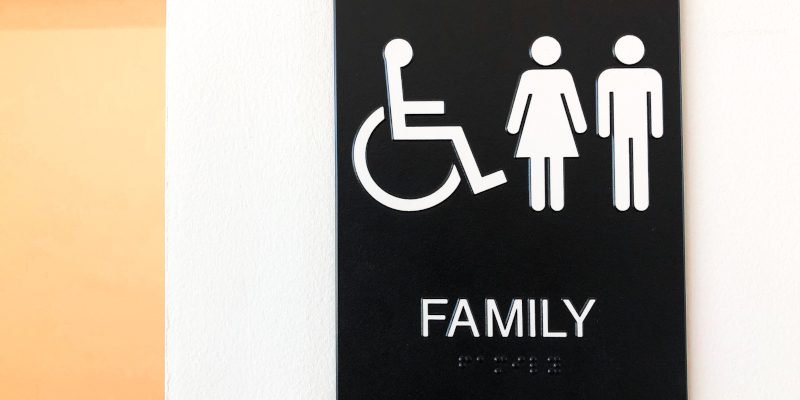Whether you’re looking to improve the bathrooms in your business or make things more convenient for an elderly family member, accessibility is important, and bathroom plumbing is a good place to start. Although it may be difficult for those who aren’t disabled to know where to begin and what features are the most helpful for customers, friends, or family members, the Americans with Disabilities Act offers some clear and useful guidelines.

Choose an Accessible Sink
How high is the sink in the bathroom? It’s probably something you’ve never noticed, but could you reach it from a sitting position? Ensuring that everything is within reach and that a wheelchair can be pushed up to the counter is an important consideration in creating an accessible bathroom. A sink that’s a bit lower can also be more convenient for children to reach, making this choice an excellent first step in creating an accessible environment.
Is There Sufficient Space?
What may feel like a roomy bathroom can be a tight squeeze for wheelchairs, walkers, or other mobility aids. Not only should there be enough room to get in and out, but you should ensure that turning and moving about the room also won’t be a problem.
Don’t Forget the Bathtub or Shower
In most businesses, considering a bathtub or shower as part of your accessible bathroom plumbing plans isn’t going to be necessary. However, in residential situations, it’s a significant consideration. Standing showers, which present no trip hazards, and walk-in bathtubs, which include built-in seats, are the two main options. Each offers unique features to assist individuals with different mobility limitations.
While redesigning your bathroom plumbing can feel overwhelming, creating accessible spaces is worth all the effort. Each step you take will help disabled members of the community feel more comfortable and welcome in your home or business.
